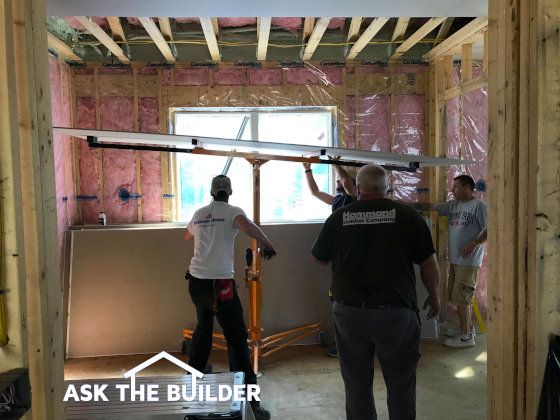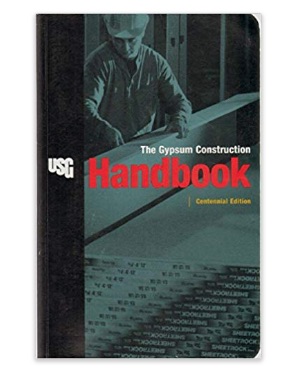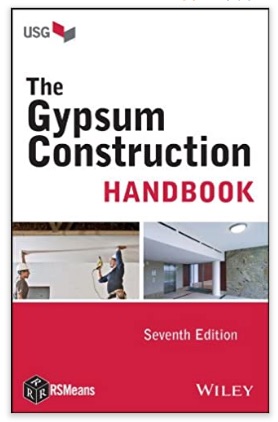Drywall Installation Tips – #1 Dusty and Heavy!

Drywall Installation | Large sheets of drywall are very heavy. Drywall requires muscle for sure. You can rent machines that hold the sheets up against the ceiling. (C) Copyright 2021 Tim Carter
Drywall Installation - It's Dusty and Dirty
Drywall installation and finishing is not as easy as it looks. Don't be fooled by those cheesy cable-TV home improvement shows. Just wait until you have to lift and hold a 4x12 piece of 1/2-inch drywall over your head and try to find a joist!
CLICK or TAP HERE to get FREE BIDS from local contractors who will install drywall for you.
What is the Best Temperature to Install Drywall?
Drywall and gypsum finishing products should be installed when the temperature is 55 F degrees or higher. As the temperature goes over 80 F, you'll start to suffer, especially if it's humid.
Does Drywall Expand?
Drywall expands as the temperature goes up. Drywall installed at 28 degrees F will expand 1/2 inch over 100 feet when the temperature rises to 72 degrees F.
Should I Leave a Gap When Installing Drywall?
Be sure to leave a 1/8" gap between sheets to account for this expansion if the drywall is cold and the room temperature is below freezing when hanging the material.
What is the Minimum Temperature to Finish Drywall?
Drywall finishing materials perform poorly in temperatures below 55 degrees. Never allow drywall finishing materials to freeze before they are completely dry. Frozen finish compounds can lose their strength and possibly lose their bonding qualities as well.
Will Humidity Cause Drywall to Expand?
Humidity can also cause expansion and contraction problems in drywall. Drywall can expand 1/2 inch per 100 feet when the relative humidity goes from 13 percent to 90 percent. This expansion can cause the boards to become wavy due to the expansion. Excessive humidity can also cause ceiling drywall to sag between framing members. In the event this happens, it cannot be corrected. The force of gravity pulls the drywall down and it will retain this bowed shape.
What Should I Do About Damaged Panel Edges?
Damaged drywall panel edges should be cut out. Don't try to fasten crushed or fractured drywall.
Often during delivery or installation, the edge of the drywall panels may get bumped. The result of this is a fractured edge. The gypsum core becomes fractured while the paper covering may or may not be intact. Often the result looks like a blister. These areas should be cut out and any fractured core material should be removed. Do not try to install fasteners through a damaged area. The fractured area will have little ability to hold a fastener. The board or panel may sag in this area at a later date.
Should Walls be Straight?
Wall studs should be straight. All crowns in the lumber should face the same direction.
For a top-notch job, make sure that framing members are in alignment. Bowed or twisted walls studs will cause wavy walls. Misaligned framing members can also result in nail pops. Nailheads will frequently puncture the paper covering the core.
How Long Should Drywall Nails & Screws Be?
For the best advice, look at USG's Gypsum Construction Handbook. You'll discover they almost always recommend 1 and 1/4-inch screws for 1/2-inch-thick drywall and 1 and 5/8-inch screws for 5/8-inch-thick drywall.

This is the Bible of hanging and finishing drywall. I recommend you buy this and read the section on drywall. CLICK THE IMAGE to have a copy delivered to your home.
Nails and screws should be the proper length. Nails that are too long can cause nail pops if lumber shrinkage occurs. One half inch drywall works best with 1 1/4 inch annular ring shanked drywall nails. The same goes for screws. Always use nails and screws approved for drywall. They have specially shaped heads that are formed so as not to tear the paper when slightly recessed. This is extremely important. Driving a nail or screw too deep will also tear the paper around the fastener. If this occurs, the holding power of that nail or screw is greatly diminished. Screws and nails should be driven approximately 1/32 inch below the surface. Always apply pressure to the board with your hand, just before the screw or nail begins to recess. The board must be tightly pressed against the framing members when driving fasteners.
What is the Proper Spacing for Nails and Screws?
Ceilings should have fasteners every 12 inches. Walls can have fasteners every 16 inches on center.
Screws and nails should be put in a sufficient quantity so as to hold the drywall in place. The maximum spacing for screws and nails in ceilings attached to wood is 12 inches on center. For a four foot wide piece of drywall, that means one at each edge and three fasteners equally spaced between the two edge fasteners. For walls, you need one at each edge and two others between the edge, or 16 inches on center. This spacing is extremely important.
Remember, if the drywall pieces are not properly attached, you will in all likelihood experience problems at a later date. The amount of time and mess that goes into finishing the drywall dictates that you should spend the extra time to properly install the panels. All too often, people hanging drywall spend too little time, thinking that the finisher will tend to their mistakes. Don't let this happen on your job!
Column B19

2 Responses to Drywall Installation Tips – #1 Dusty and Heavy!